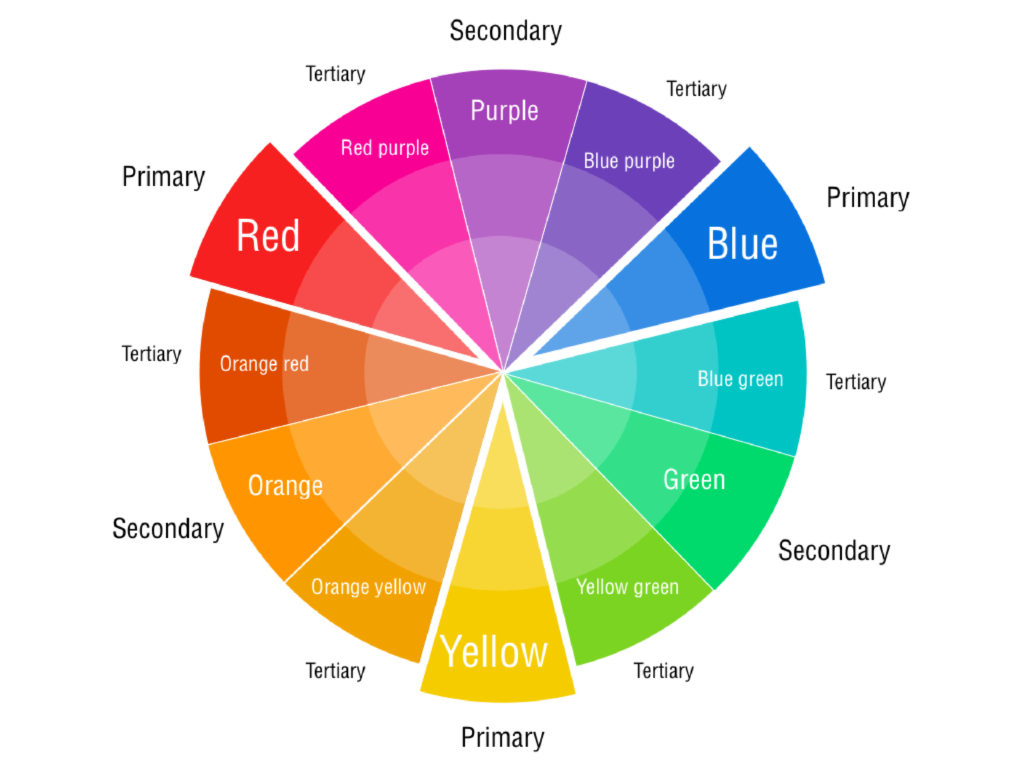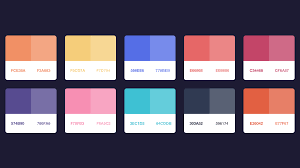Color theory plays a significant role in graphic designing as it can influence the way we see visual information. Colors can evoke emotions and can convey feelings without using words. It is important for designers to learns the basics of graphic designing as it helps them create visually attractive and engaging designs. In this article we learns about the basics of color theory, its psychological impacts, application in design and future trends.
What is color theory?
Color theory is the study of how different colors interact with each other and how they can be used to create harmonious and eye-catching designs. It includes the understanding the properties of colors such as hue, saturation and value and how they can be combines together to create new effects.
Basics of color theory:
Color theory is all about understanding the interaction of colors with each other and how they can be used to create visually appealing designs. Following are they key concepts of color theory:
1. Color wheel:
It is a virtual representation of colors arranged in a circular form. It consists of primary colors (red, blue and yellow), secondary colors (orange, green, purple) and intermediate colors (mixture of primary and secondary colors).

The color wheel serves as a foundation for creating visually appealing designs. By using contemporary colors (colors opposite to each other in color wheel), designers can create high contrast effects that makes elements stand out. Analogous colors (colors present next ti each other) create a sense of unity and harmony.
2. Color temperature:
Color temperature is the recognized warmth or calmness of a color. A few colors such as red, orange, yellow are associated with warmth and evoke the feelings of energy and excitement. Colors such as blue, purple green are considered to be cool and they create a sense of calmness.
3. Color harmony:
Color harmony refers to the concept of creating pleasing combination of colors in a design. There are a variety of color harmonies to incorporate in your design, such as complementary colors (colors opposite to each other on the color wheel), analogous colors (colors next to each other on the wheel) and triadic colors (equally spaced on the wheel). These harmonies helps you create visually appealing and cohesive designs.
4. Color contrast:
Color contrast is an important aspect of design that involves placing two or more colors side by side to create an interesting and impactful effect. The colors differ with each other in terms of brightness, hue and saturation. High contrast can make elements stand out and helps improves readability. You can find various color palettes in a useful website colorhunt.

Color, Psychology and Emotions:
Colors have a profound psychological impact on human mind, influencing their perception, behavior and emotions. By utilizing this understanding, designers can create designs that catches user attention.

Different colors can evoke different emotions and have differentt associations. For example:
- Red- Often conveys the a sense of energy and excitement. It can also convey a sense of urgency or emergency.
- Blue- Blue is usually known for its calming and soothing effects. Also often linked with trust and reliability.
- Yellow- Conveys a feeling of happiness and positivity.
- Black- Often associated with sophistication, powe and elegance. Can also evoke a sense of mystery or formality.
- Green- Represents nature, growth and positive mindset. Also linked with feelings of freshness and balance.
Application of color theory in graphic design:
- Branding and identity
- Emotional impact
- Visual hierarchy
- Accessibility
- Cultural considerations
1. Branding and Identity:
Consistency in use of colors can be helpful in establishing and strengthen brand identity. Designers select colors that align with the brand’s personality and target audience to ensure brand recall and difference in market.
2. Emotional impact:
Different colors evoke different emotions and reactions. Designers make use of this knowledge to align color choices with the intended message or brand identity. For example blue is often associated with trust while red can evoke a sense of excitement or urgency.
3. Visual hierarchy:
Colors can also be used to establish a hierarchy of information within a graphic design project. Brighter or more saturated colors are used to draw attention to key elements, while neutral colors are used for background to provide support.
4. Accessibility:
Designers should consider color contrast as well as legibility when designing for accessibility. They must ensure that their color choices meet accessibility standards, authorizing people with visual impairments to understand their content.
5. Cultural considerations:
Designers must be mindful of cultural associations when creating designs for global audiences as different cultures may understand colors differently. What may recognize positively in one culture could have negative associations in other culture.
Conclusion:
Overall, a deep understanding and effective application of color theory helps graphic designers to create impactful and unique designs. With the constant change of design trends, staying updated about future color usage allows designers to stay ahead of others and create impactful designs in an ever changing landscape. You can also explore the other essentials of graphic designing here.
